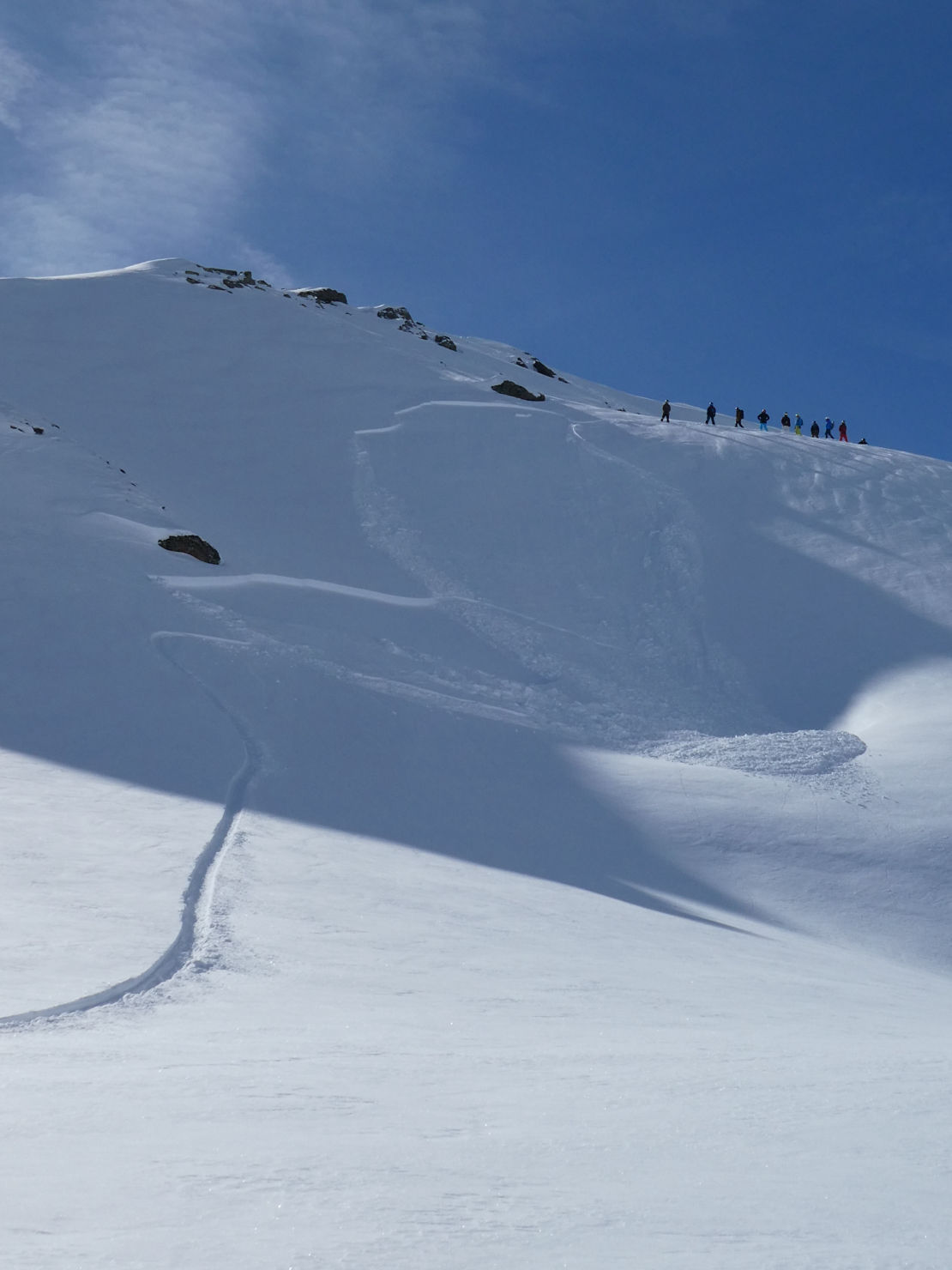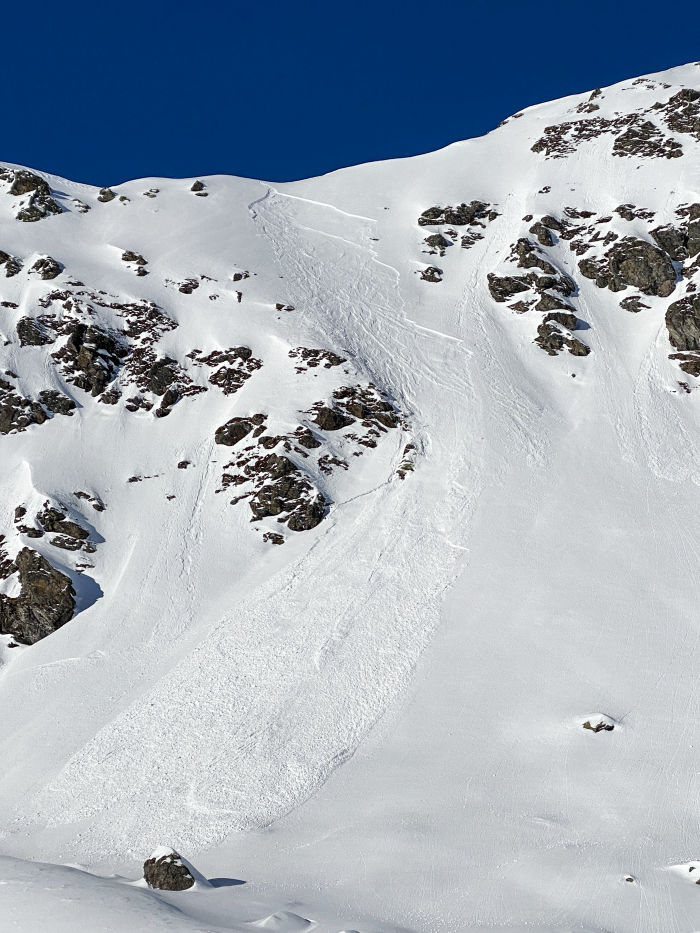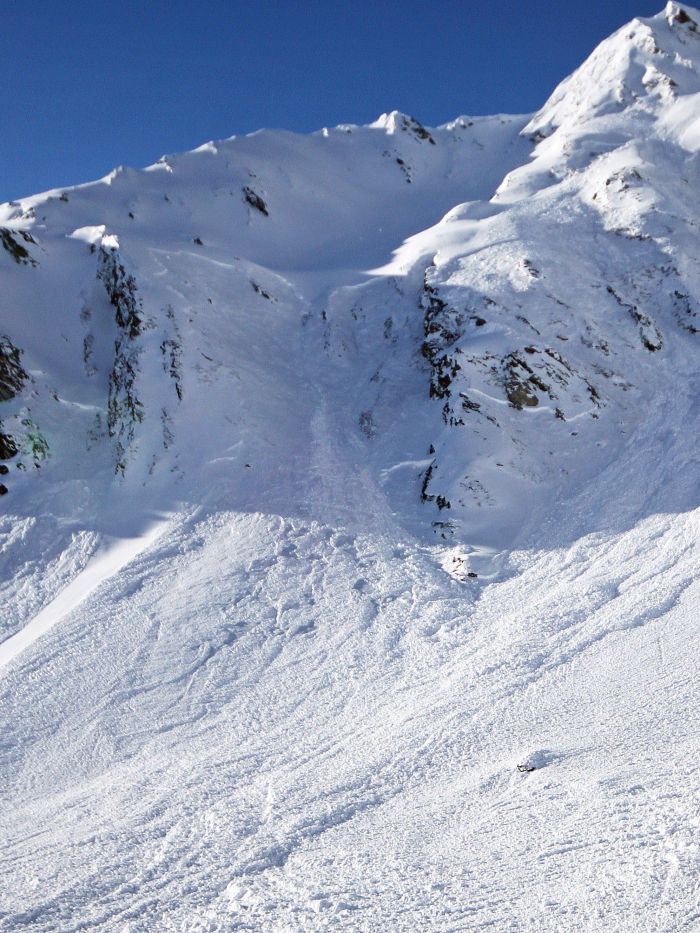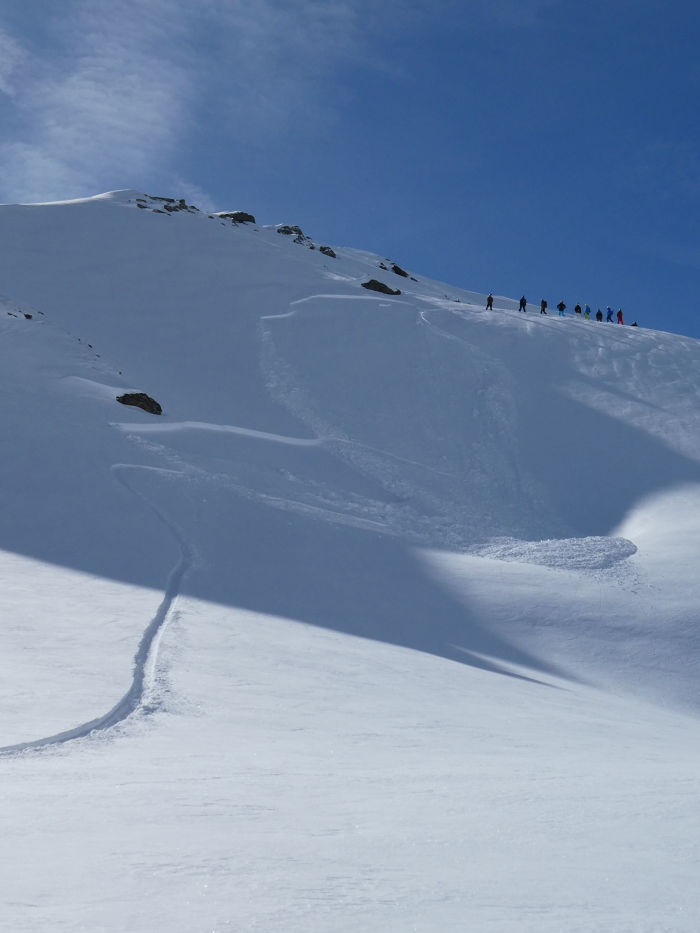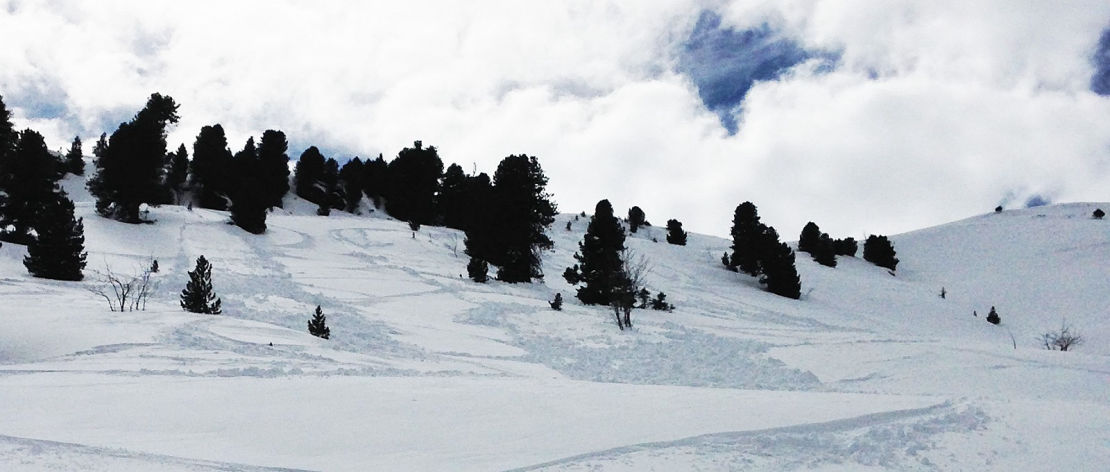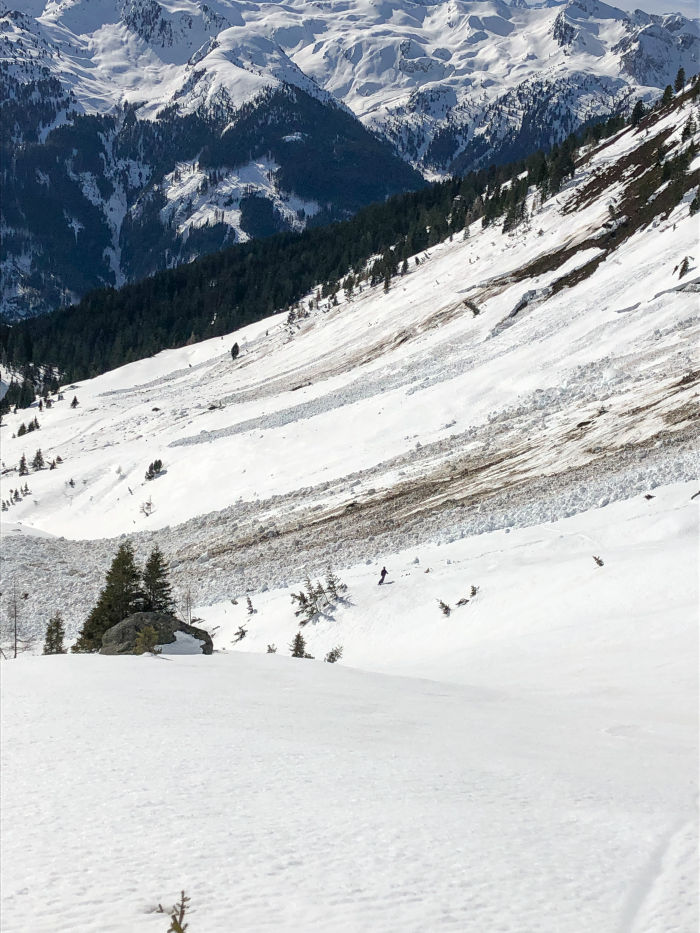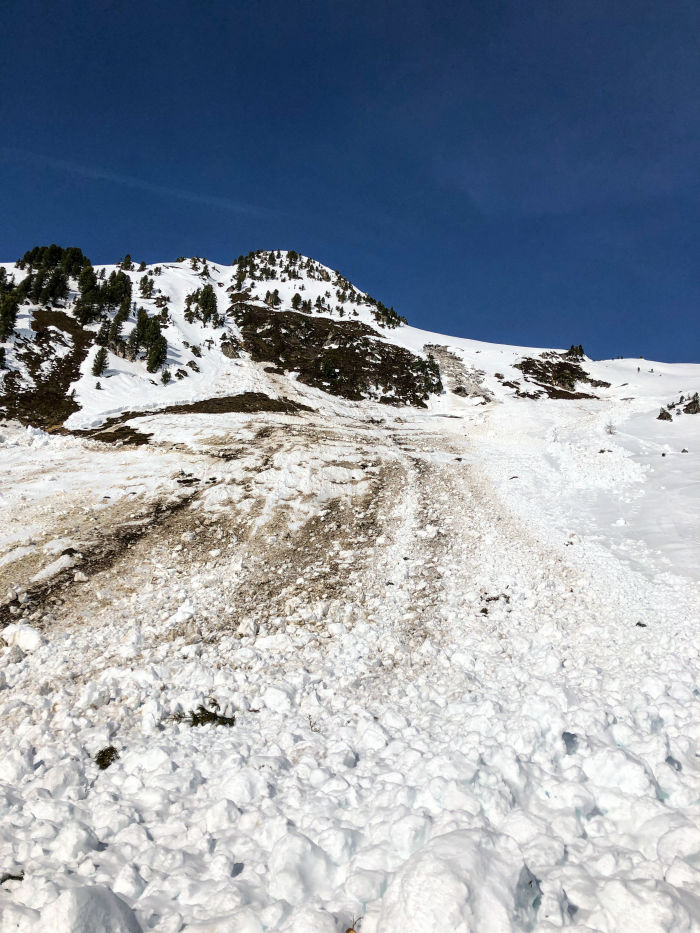These occur when the entire snowpack slowly slides as a unit from the ground. A glide occurs because melt water lubricates the ground and allows the overlying snowpack to slowly “glide” downhill. The presence of glide cracks in the snow doesn’t necessarily mean danger, but at the same time it’s not smart to be mucking around on top of them.
I find there are common zones in my local resorts that get hit by the sun, have a high level of steepness and trigger once a certain level of snow build up has occurred. Rather than being slow glide avalanches, these rapidly release to full depth.
It's handy to know these zones, so each year I can avoid these areas. This zone is a typical hot spot on the exit of an epic line we often ride. I spread the group out as we tour out of this zone to limit exposure as the whole face gets a lot of sun and is very steep so often pops.
